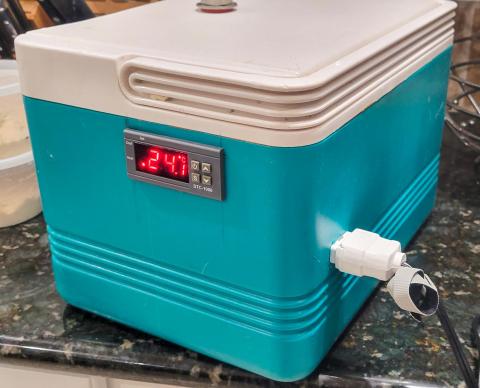
Choc cakes with molten citrus ganache centres
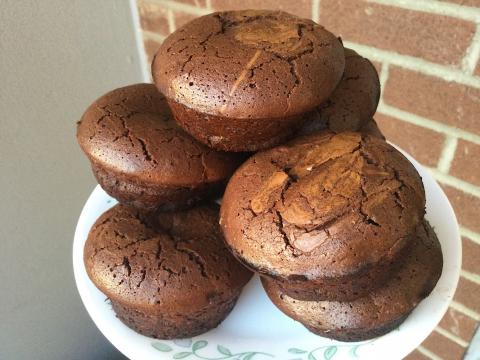
Inspiration
Lava cakes seem to be trendy for Valentine's day. This is more of a little chocolate cake with a slightly crisp shell and molten (but not flowing) orange citrus chocolate ganache centre.
These cakes are mostly chocolate... so I wouldn't rely on chips for the cake or Lindor fillings to replace the ganache as suggested in the original. Blech! Give me deep chocolate, real vanilla and real orange!
The recipe was inspired from https://www.recipetineats.com/molten-chocolate-cakes/comment-page-2/#wprm-recipe-container-57946
With the following differences:
- I used unsweetened chocolate and added 40% sugar (she used chips with a lower cocoa % to help with flow of the centre)
- I used the stovetop to make ganache, not a microwave and choc chips
- I added orange zest and vanilla bean to the ganache
- I used cake flour
Ingredients
MOLTEN CHOCOLATE GANACHE CENTRE:
- 60g unsweetened chocolate chopped into bits
- 40g sugar for chocolate
- 60g heavy cream (eg. 35% whipping cream)
- 1 vanilla bean
- zest 1 small orange
NOTE: I should mention that you won't use all this ganache. The original recipe made too much and so does this. The amount you put in each cake is up to your judgment but I had plenty (half?) left over.
CAKE BATTER:
- 120g unsweetened chocolate chopped into bits
- 80g sugar for chocolate
- 100g unsalted butter 1cm cubes
- 1 vanilla bean
- 2 eggs room temperature
- 2 egg yolks room temperature
- 100g caster sugar for cake (or just food process regular sugar)
- 16g cake flour
Instructions
GANACHE:
- in a saucepan, add cream, sugar, vanilla and zest and mix thoroughly
- NOTE: consider food processing zest into sugar to enhance flavour
- warm on stove medium, stirring regularly, until just starts to bubble
- remove from heat and add small amount of chopped chocolate and stir until melted in
- alternate warming, adding bits of chocolate, stirring until all smoothly integrated
- Cool 10 minutes
- refrigerate until firm enough to scoop
CAKE:
- Preheat oven 390°F
- Grease & dust moulds with cocoa, tapping out excess
- in a saucepan, add butter, chocolate's sugar, stirring until integrated
- warm on stove medium, stirring regularly, until just starts to bubble
- remove from heat and add vanilla
- add small amount of chopped chocolate and stir until melted in
- alternate warming, adding bits of chocolate, stirring until all smoothly integrated
- put aside to cool
- In a bowl, whisk eggs, egg yolks and the cake sugar (I food processed it with old vanilla pods then sifted them out)
- Add portion of melted chocolate into the eggs, mixing until combined, repeating until all integrated
- Sift flour over batter and fold until just combined
- Fill 7-8 muffin moulds ⅓ with batter
- Place blob ganache into middle of each batter
- Cover each with more batter until 1 cm from top
- Bake 17 minutes
- I baked mine in a floppy silicone mould on a thin aluminum sheet and after 17 minutes I added another 3 without the sheet. This may be why I got the slightly crispy shells, which I liked
Some Photos
Chocolate chips are not a good substitute for baking chocolate. This is a mostly chocolate dessert... so start with real all-cocoa / cocoa butter chocolate without the extra sugar, wax, stabilizers, flavourings and whatnot of chips...
Here I've plopped a blob of glorious ganache into a pool of batter in 8 muffin cups. Then I topped it off with more batter and baked.
Look at how dark that chocolate is....
And they baked up nicely...
Results
The cakes had a wonderful chocolate aroma, deep chocolate flavour, a slightly crispy shell and a molten chocolate interior with a lovely and nuanced natural orange essence from zest. The whole thing is mostly chocolate so it was pretty great because I took the time to make it with quality ingredients.
To serve, we microwave the cakes to melt the ganache. Yes, the shell stays a bit crispy.
I froze my cakes to portion them out over time. These are small but very satisfying.
Crummy photo...
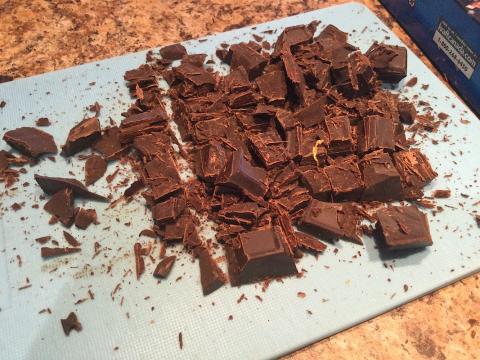







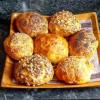

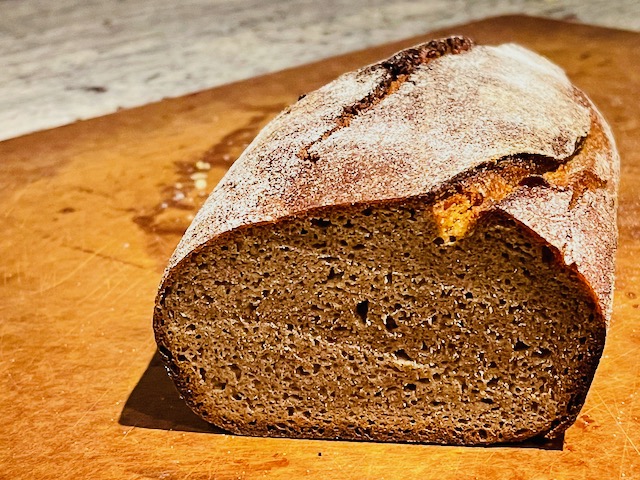 Inspired by Breadtopia and copied:
Inspired by Breadtopia and copied: 



